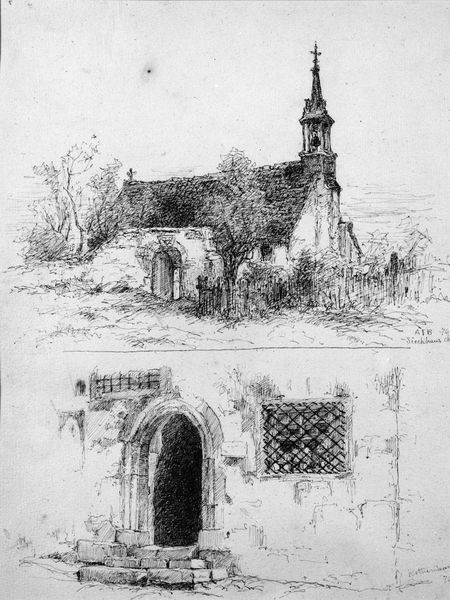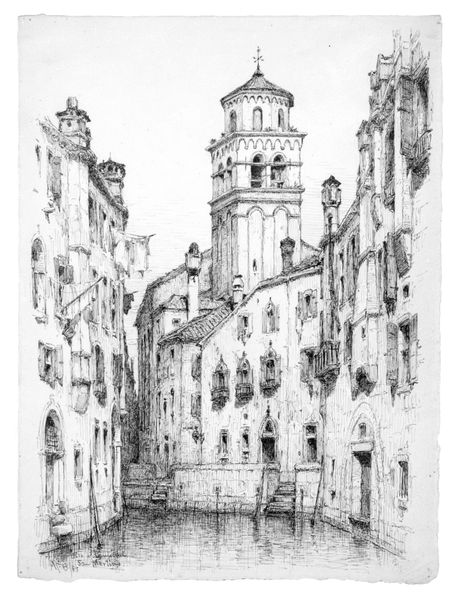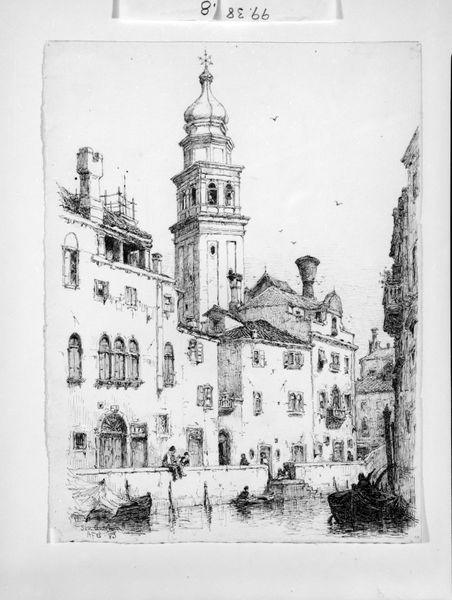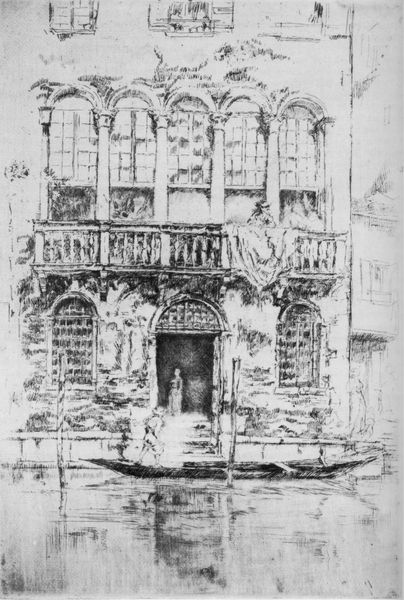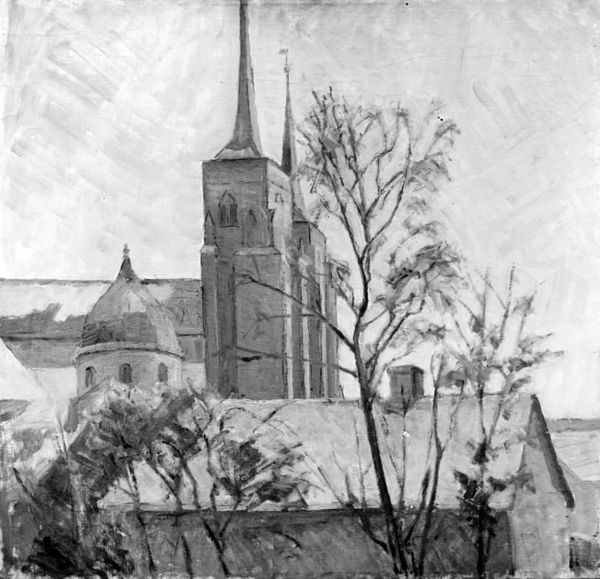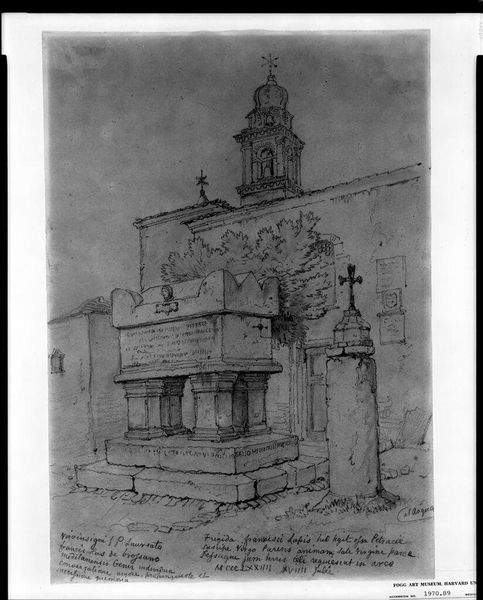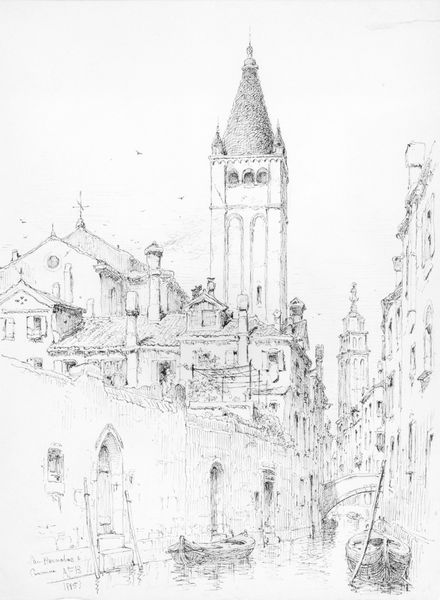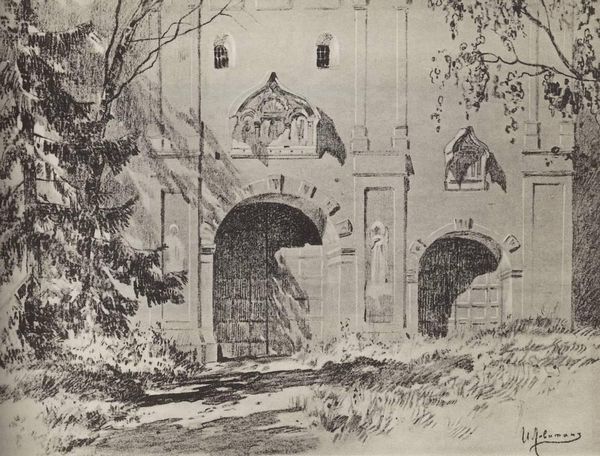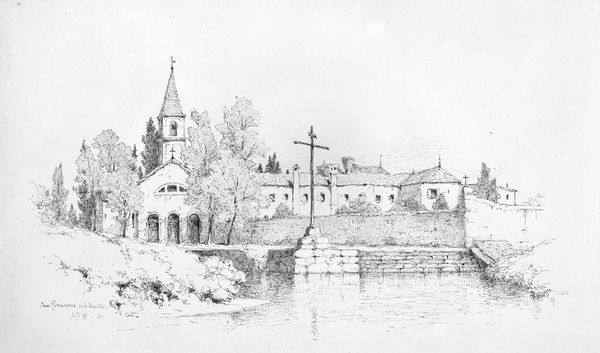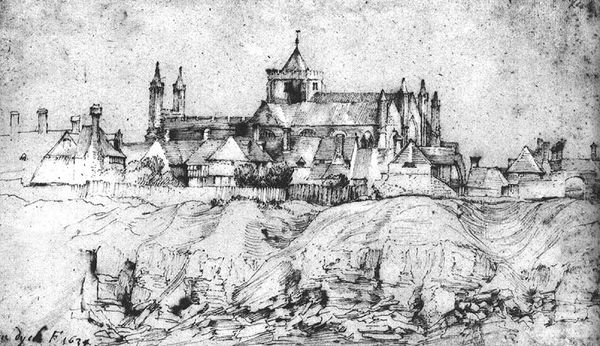
drawing, ink, architecture
#
architectural sketch
#
drawing
#
architectural landscape
#
pencil sketch
#
charcoal drawing
#
ink
#
pen-ink sketch
#
architecture drawing
#
cityscape
#
architecture
#
realism
#
building
Dimensions: 12 3/4 x 9 3/4 in. (32.4 x 24.8 cm)
Copyright: Public Domain
Curator: Andrew Fisher Bunner's 1883 ink drawing, "Chiesa e Rio San Felice," presents a tranquil view of Venice. My first impression is one of remarkable detail; the artist truly captures the unique luminosity and depth achievable through ink wash techniques. Editor: Yes, Bunner has composed a scene laden with atmosphere. Look how he balances the heavy architecture with the almost dreamlike reflection in the water, creating a very precise representation of the interplay of water, light, and form unique to Venice. But what about the people who lived and prayed in this church? What socioeconomic realities shaped this corner of Venice? Curator: Formally, the contrasts of dark, etched lines against softer shaded areas generate a complex visual texture. Note the strategically placed highlights; these draw the viewer's eye upwards toward the church's bell tower and the detailed ironwork, making the tower a clear focal point within the composition. The eye then glides over to the architectural facade to the right, which acts as secondary, subdued point of visual attention. Editor: This work offers an opportunity to contemplate the position of religious institutions within rapidly modernizing urban environments, and also to consider what would cause Bunner to make this vista a point of capture in ink on paper. The late 19th century saw intense debates about urban space, class divisions, and the role of faith. Understanding this background can give his "Chiesa e Rio San Felice" an enhanced contextual depth. Curator: I am drawn to how the ink defines and creates form in such intricate detail, almost breathing. These linear networks serve more than representational purposes; they define the experience of light in architecture. Editor: Perhaps, through Bunner’s rendering of the religious buildings’ reflection in the Venetian waterway, the artist suggests the necessity of faith adapting to societal flows in Venice. Curator: Precisely! I think that by reducing it to form we can access not only its historic context, but its enduring beauty. Editor: And its ability to provoke essential cultural discussion in the present day. Thank you for your insight!
Comments
No comments
Be the first to comment and join the conversation on the ultimate creative platform.


